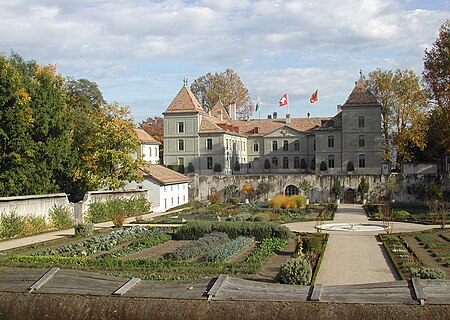Prangins Castle
Castles in VaudCultural property of national significance in the canton of VaudHistoric house museums in SwitzerlandHistory museums in SwitzerlandMuseums in the canton of Vaud

Prangins Castle is a castle in the municipality of Prangins of the Canton of Vaud in Switzerland. It is a Swiss heritage site of national significance.It is home to one part of the Swiss National Museum. There are other parts are in Zurich and Schwyz. At Prangins, the displays focus mainly on daily life in the castle and the region. There are also displays relating to Swiss history, as well as temporary exhibitions and cultural events. There is a café, serving drinks, snacks and lunch. The terrace has views of Lake Geneva and the Alps.
Excerpt from the Wikipedia article Prangins Castle (License: CC BY-SA 3.0, Authors, Images).Prangins Castle
Avenue du Général Guiguer,
Geographical coordinates (GPS) Address Website External links Nearby Places Show on map
Geographical coordinates (GPS)
| Latitude | Longitude |
|---|---|
| N 46.39416 ° | E 6.25196 ° |
Address
Château de Prangins
Avenue du Général Guiguer 3
1197
Vaud, Switzerland
Open on Google Maps









